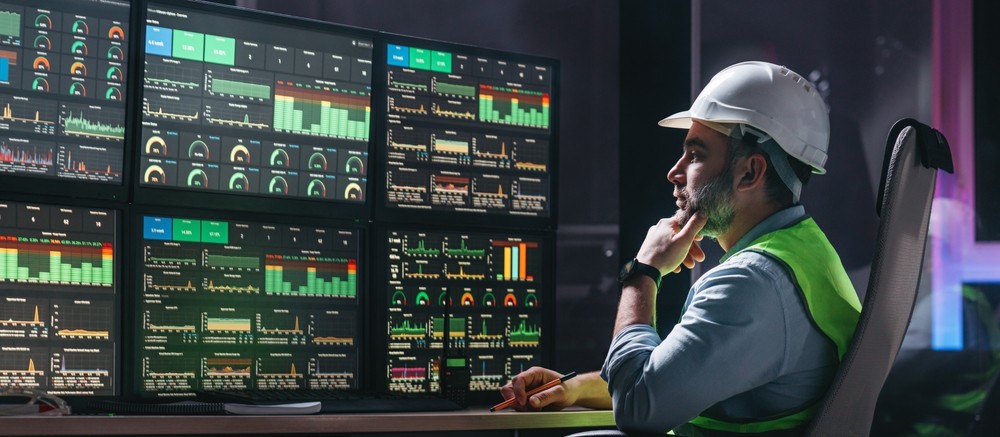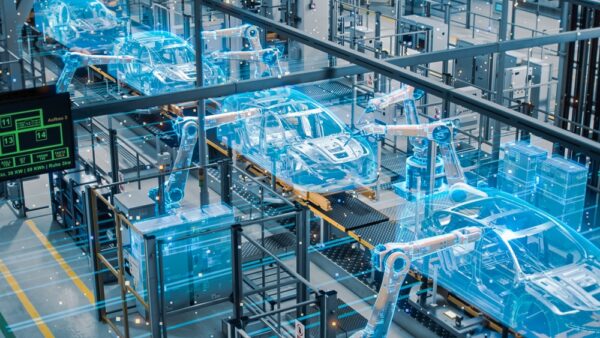Coordinating Factory Data: M2M vs. M2E Communications

Modern factories are complex ecosystems where efficient data flow is crucial for smooth operations. A digitally enabled factory is a data-generating powerhouse. From individual sensors to complex manufacturing management systems, it’s possible to generate millions of data points each day. But where does all that data go? And how does it get there? Two key communication methods play a vital role in this data exchange: machine-to-machine (M2M) and machine-to-enterprise (M2E).
M2M communication: Real-time efficiency on the factory floor
M2M communication allows machines on the factory floor to directly exchange data with each other. Automation controllers on individual machines are equipped with special communication modules that allow them to send and receive data directly. This real-time exchange offers several advantages:
- Improved efficiency: Machines can adjust their operations based on the output of others, optimizing production flow.
- Reduced downtime: Real-time diagnostics allow for proactive maintenance, preventing equipment failures.
- Enhanced coordination: Robotic equipment and other machines can synchronize movements to maintain smooth product assembly.
M2M communication typically uses standardized industrial protocols. Universal gateways are becoming increasingly popular, as they allow controllers to communicate over multiple protocols simultaneously for greater flexibility.

M2E communication: Centralized data for informed decisions
M2E communication focuses on connecting factory machines to enterprise-level data systems. This enables centralized data management, providing a holistic view of factory operations. Business systems can then access and utilize this data for various purposes:
- Centralized data management: All factory data resides in a single, accessible location.
- Improved resource allocation: Enterprise systems can analyze production data to optimize resource use and distribution across the factory.
- Enhanced decision-making: Real-time insights from the shop floor empower managers to make data-driven decisions.
M2E communication often utilizes relational database integration. Factory-floor data is deposited into a staging table within a relational database. Business systems can then access and utilize this data for further analyses. System integrations play a crucial role in ensuring seamless connectivity between factory equipment and enterprise systems.
Choosing the right communication method
The choice between M2M and M2E communication depends on specific factory needs and applications.
Factories requiring real-time data exchange for optimized production processes might benefit more from M2M. Factories needing centralized data for enterprise-level decision making will favor M2E. Factors like data volume, factory size, and existing infrastructure also influence the choice. While M2M offers faster data exchange, it might not be suitable for complex enterprise-level data management. Conversely, M2E can be difficult to implement, but it offers a broader view of factory operations.
Ultimately, both protocols are useful in an increasingly digital factory environment. If resources can’t be allocated to implement both, assess your manufacturing operations to determine which benefits will have the greatest impact: adaptable action and automation (M2M) or high-level insight and holistic factory connectivity (M2E).
Keeping up with manufacturing’s digital demands
M2M and M2E communication are both critical protocols for modern digital factories. Understanding their applications allows manufacturers to choose the right approach to aggregating and actioning data.
The future of factory data communication likely lies in the convergence of M2M and M2E, further facilitated by the industrial Internet of Things (IIoT). As factories become increasingly interconnected, efficient data flow will continue to be the cornerstone of operational excellence.